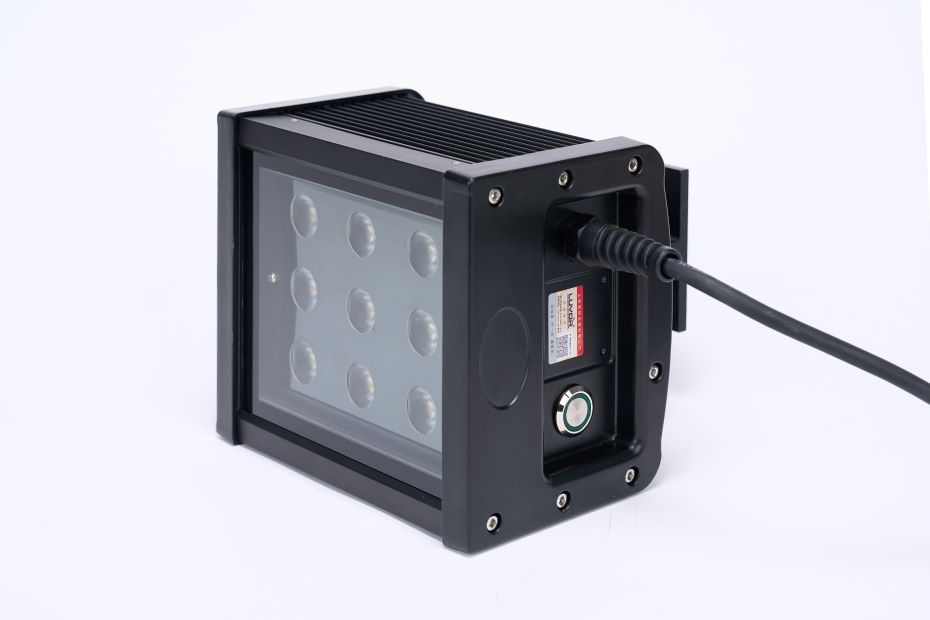LUYOR-3109高強(qiáng)度紫外催化光源促銷
LUYOR-3109紫外光源采用了9顆365nm大功率led,安裝有二次光學(xué)透鏡,輸出紫外線強(qiáng)度高,...
2024-08-08
LUYOR-3109紫外光源采用了9顆365nm大功率led,安裝有二次光學(xué)透鏡,輸出紫外線強(qiáng)度高,...
2024-08-08
KillerRed是個完全由基因編碼的光毒性紅色熒光蛋白,可接受綠色光照(540~580nm)生成活...
2024-04-29
中國科學(xué)院南京土壤研究所彭新華研究員團(tuán)隊陳晏副研究員在農(nóng)田長期多樣化種植下,種間植物根際對話調(diào)控土壤...
2024-04-07咨詢熱線
021-64195798作者:生命科學(xué)事業(yè)部時間:2019-11-07 21:31:21瀏覽2350 次
盡管最近發(fā)展了強(qiáng)大的遺傳工具,但熒光蛋白在觀賞植物中的應(yīng)用已經(jīng)落后了。我們以前創(chuàng)制了轉(zhuǎn)基因蝴蝶草屬植物,它可以表達(dá)海洋浮游生物中的綠色熒光蛋白 (CpYGFP),其明亮的熒光在整個植物水平很容易被看到,但是在可見光光譜中,這種蛋白質(zhì)的更大激發(fā)需要使用發(fā)射濾片來消除激發(fā)光。
有了這個GFP,再也不用擔(dān)心約不到confocal 了
綠色螢光蛋白(Green fluorescent protein,簡稱GFP),是一個由約238個氨基酸組成的蛋白質(zhì),從藍(lán)光到紫外線都能使其激發(fā),發(fā)出綠色螢光。雖然許多其他海洋生物也有類似的綠色熒光蛋白,但傳統(tǒng)上,綠色熒光蛋白(GFP)指首先從維多利亞多管發(fā)光水母中分離的蛋白質(zhì)。這種蛋白質(zhì)最早是由下村脩等人在1962年在維多利亞多管發(fā)光水母中發(fā)現(xiàn)。
11月8日,Scientific Reports 發(fā)表了題為:Generation of brilliant green fluorescent petunia plants by using a new and potent fluorescent protein transgene 的論文,文中報道了一個新型GFP 基因,通過肉眼即可看到綠色的熒光。
摘要
盡管最近發(fā)展了強(qiáng)大的遺傳工具,但熒光蛋白在觀賞植物中的應(yīng)用已經(jīng)落后了。我們以前創(chuàng)制了轉(zhuǎn)基因蝴蝶草屬植物,它可以表達(dá)海洋浮游生物中的綠色熒光蛋白 (CpYGFP),其明亮的熒光在整個植物水平很容易被看到,但是在可見光光譜中,這種蛋白質(zhì)的更大激發(fā)需要使用發(fā)射濾片來消除激發(fā)光。本文,為了克服這個限制,我們產(chǎn)生了表達(dá)eYGFPuv (一種高強(qiáng)度紫外線燈發(fā)出的紫外光激發(fā)下表現(xiàn)出明亮熒光的cPYGFP衍生物) 的轉(zhuǎn)基因矮牽牛植物,其具有轉(zhuǎn)錄終止子加翻譯增強(qiáng)子的新組合。正如預(yù)期的那樣,所有轉(zhuǎn)基因植物都表現(xiàn)出明亮的綠色熒光,肉眼可見,無需發(fā)射發(fā)射濾片。此外,轉(zhuǎn)基因矮牽牛花中的熒光在長期無性繁殖過程中是穩(wěn)定的。最后,我們目測和定量地證實(shí)了轉(zhuǎn)基因矮牽牛花對紫外線的長期暴露無任何損傷,如熒光衰減和枯萎。因此,我們的全植物熒光成像工具,不需要高靈敏度的成像設(shè)備或特殊的成像條件進(jìn)行觀察,不僅可用于基礎(chǔ)植物研究,而且作為一種新穎的花卉特性,可用于觀賞目的。

Abstract
The application of fluorescent proteins in ornamental (裝飾的) plants has lagged (落后) behind despite the recent development of powerful genetic tools. Although we previously generated transgenic torenia (蝴蝶草屬) plants expressing green fluorescent protein from marine plankton (海洋浮游生物) (CpYGFP), in which bright fluorescence was easily visible at the whole plant level, the maximum excitation (激發(fā)) of this protein within the visible light spectrum required the use of a coloured emission filter (發(fā)射濾片) to eliminate exciting light (激發(fā)光). Here, to overcome this limitation, we generated transgenic petunia (矮牽牛) plants expressing eYGFPuv, a CpYGFP derivative exhibiting bright fluorescence under invisible ultraviolet (UV) light (black light)excitation, with a novel combination of transcriptional terminator plus translational enhancer. As expected, all transgenic plants exhibited brilliant green fluorescence easily visible to the naked eye without an emission filter. In addition, fluorescence expressed in transgenic petunia flowers was stable during long-term vegetative propagation. Finally, we visually and quantitatively confirmed that transgenic petunia flowers resist to long-term exposure of UV without any damages such as fluorescence decay and withering. Thus, our whole-plant fluorescence imaging tool, that does not require high sensitive imaging equipment or special imaging conditions for observation, might be useful not only for basic plant research but also for ornamental purposes as a novel flower property.